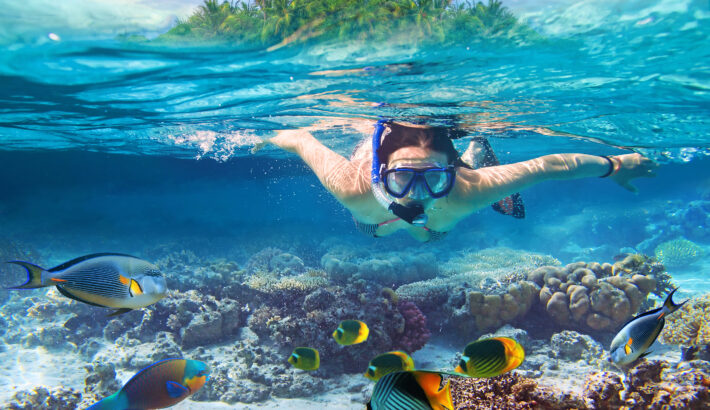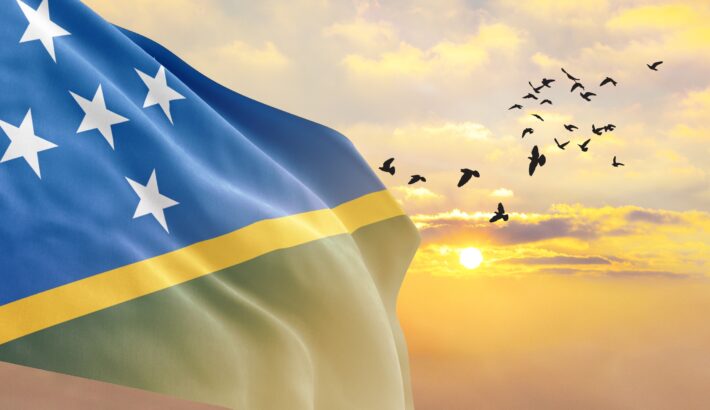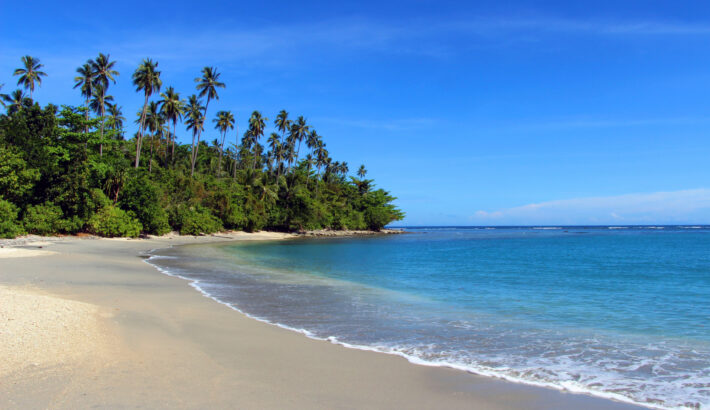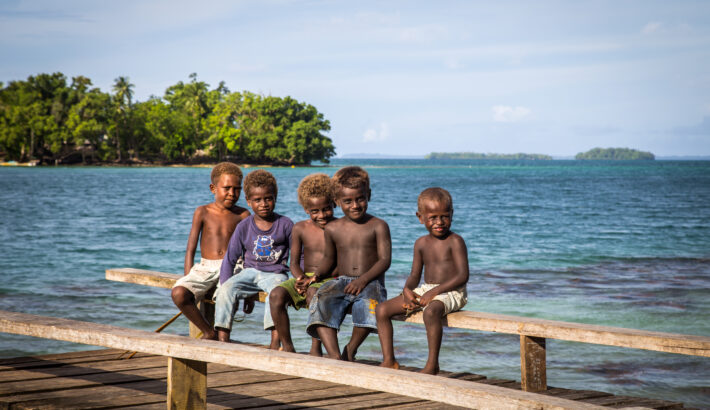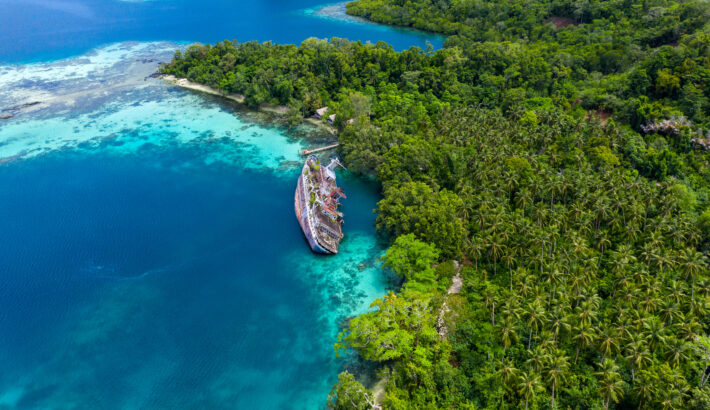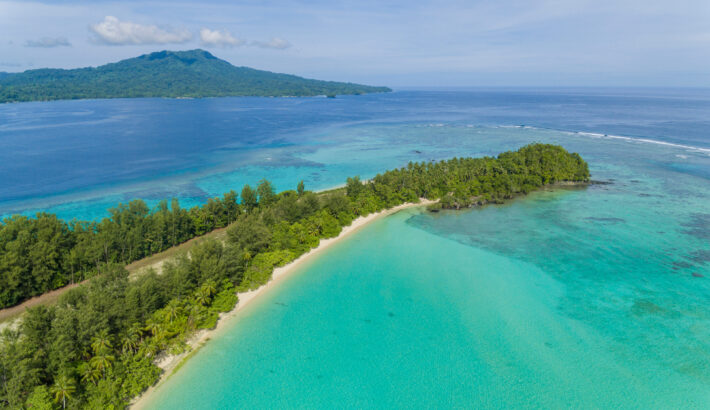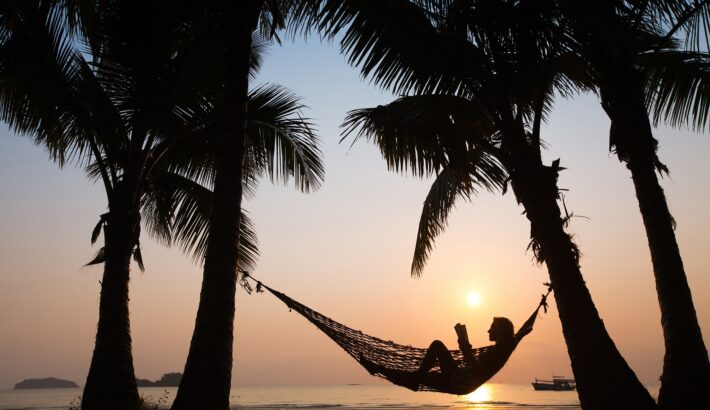Solomon Islands: Visa Information for Yachts & Cruise Ships
Download the PDF Version here: Solomon Islands Visa Information for Yachts & Cruise Ships
Visitor Guide: Visa Information for Yachts and Cruise Ships
Welcome to the Solomon Islands! As you prepare to anchor in our beautiful waters, please take a moment to review the visa and entry requirements to ensure a seamless arrival and enjoyable stay.
Health and Safety First
No pre-arrival health checks required. Your safety and wellbeing are paramount, and we are pleased to inform you that there are no specific health checks required before your arrival in the Solomon Islands.
Visa Requirements
Pre-Arrival Visa Application: Certain nationals (whether you are embarking or not) must obtain a visa before arriving in the Solomon Islands. If you or your passengers are from any of the following countries, please ensure to apply for a visa at least one week prior to your arrival:
- Bermuda,
- Chile
- China
- Colombia
- Hong Kong
- India
- Indonesia
- Mauritius
- Mexico
- Nepal
- Peru
- Philippines
- Russia
- Serbia
- South Africa
- Ukraine
- Uruguay
Application Details:
- Submission: A copy of the passport must be sent to GS Agencies at least one week before arrival so we can apply for your visa.
- Fee: $800 SBD
- Processing Time: Allow 3-4 days for visa processing.
Visas On Arrival: Travellers from countries not listed above can receive their visa stamps directly on arrival. Please ensure a complete passenger and crew list is available and submitted to immigration officials when they board.
Special Instructions for Fly-In Passengers:
If any crew members or passengers are flying into the Solomon Islands with the intention to embark on a vessel and possess only a one-way flight ticket, it is essential to Notify GS Agencies in advance. This will help us coordinate with immigration authorities to ensure entry is granted upon verification of onward or return travel arrangements.
For any queries or further assistance, please feel free to contact GS Agencies directly. We are here to help make your visit as smooth and enjoyable as possible!
Eco-Conscious Travel: Preserving the Solomon Islands’ Beauty
Download the PDF Guide: Eco-Conscious Travel Preserving the Solomon Islands’ Beauty(GS Agencies PDF8)
The Solomon Islands, a pristine paradise nestled in the South Pacific, is renowned for its untouched natural beauty and vibrant biodiversity. As a destination that’s increasingly attracting eco-conscious travellers, it’s paramount to emphasise sustainable travel practices. This comprehensive guide aims to inspire and inform visitors on how they can contribute to preserving the natural environment of the Solomon Islands for future generations.
Understanding the Environment:
- The Solomon Islands’ environment is a delicate ecosystem, home to diverse marine life, unique terrestrial flora and fauna, and lush rainforests. It’s part of the Coral Triangle, an area recognised for its extreme marine biodiversity.
- The islands face environmental challenges, including climate change impacts, deforestation, and threats to marine habitats. Conscious efforts by visitors can contribute significantly to conservation efforts.
Sustainable Travel Practices
- Reduce Plastic Use: Minimise the use of single-use plastics. Opt for reusable water bottles, bags, and straws. The islands’ waste management systems are limited, and responsible disposal of waste is crucial.
- Support Eco-friendly Accommodations: Choose accommodations that implement eco-friendly practices such as solar power, water conservation measures, and waste recycling programs.
- Participate in Conservation Activities: Engage in eco-tourism activities that support local conservation efforts. This can include guided nature hikes, wildlife watching tours that respect animal habitats, and coral reef restoration projects.
Contributing to Local Communities
- Buy Local: Support the local economy by purchasing locally made products and souvenirs. This not only provides income for local artisans but also reduces the carbon footprint associated with imported goods.
- Respect Cultural Practices: The Solomon Islands have a rich cultural heritage. Show respect for local customs and traditions. Attend cultural demonstrations or festivals to learn more and contribute to the preservation of these practices.
Eco-friendly Exploration
- Guided Nature Tours: Opt for guided tours with knowledgeable local guides who can provide insights into the islands’ ecosystems and cultural significance of sites.
- Responsible Wildlife Encounters: When engaging in snorkelling, diving, or wildlife watching, maintain a respectful distance from wildlife. Avoid touching or feeding marine animals to prevent disturbances to their natural behaviours.
Leave No Trace
- Practice ‘Leave No Trace’ Ethics: Whether exploring the islands’ jungles or underwater sites, leave environments as you find them. Avoid removing natural items or artefacts.
- Beach Clean-ups: Participate in or organise beach clean-ups. This not only helps in keeping the beaches pristine but also raises awareness about marine pollution.
Supporting Sustainable Initiatives
Many local and international NGOs operate in the Solomon Islands, working on environmental conservation and community development projects. Consider supporting these organisations through donations or volunteer work.
Visiting the Solomon Islands offers a unique opportunity to experience one of the world’s most beautiful and untouched destinations. By adopting eco-conscious travel practices, visitors can play a crucial role in preserving the islands’ natural beauty and supporting sustainable development. The collective effort of each traveller contributes to a sustainable future for the Solomon Islands, ensuring its wonders remain vibrant and intact for generations to come.
10 Fascinating Facts about the Solomon Islands
Download the PDF Guide: 10 Fascinating Facts about the Solomon Islands (GS Agencies PDF7)
- Geographical Marvel: The Solomon Islands, an archipelago of nearly 1,000 islands, lies in the Pacific’s heart, offering a diverse landscape from lush rainforests to volcanic mountains and expansive lagoons. This geographic diversity forms a perfect backdrop for an array of adventures and explorations.
- Rich Biodiversity: The islands are a part of the Coral Triangle, known for its astoundingly diverse marine life. The waters around the islands house more than 500 species of coral and 1,000 species of fish, making it a paradise for snorkelers and divers alike.
- Cultural Tapestry: With a population speaking over 70 languages and dialects, the Solomon Islands’ culture is as diverse as its landscapes. The local customs, traditions, and ways of life remain deeply rooted in the communities, offering a rich cultural experience to its visitors.
- Historic WWII Site: The Solomon Islands played a pivotal role during World War II, being the location for the Guadalcanal Campaign. Relics from the war such as warships, aircraft, and armaments can still be found scattered across the islands and underwater, serving as a somber reminder and a unique historical attraction.
- Unique Wildlife: Apart from the marine biodiversity, the islands are home to unique fauna, including endemic species like the prehistoric-looking Solomons skink, the Solomon Islands’ eagle, and various other species that are found nowhere else on Earth.
- Underwater Wonders: Divers can explore numerous WWII wrecks submerged beneath the clear waters, alongside vibrant coral reefs that provide a habitat for a kaleidoscope of marine life, offering an unparalleled underwater adventure.
- Sustainable Living: The Solomon Islanders have lived sustainably for thousands of years, with communities relying on fishing, small-scale agriculture, and forest resources in ways that are closely tied to the islands’ natural rhythms and cycles.
- Artistic Expressions: Wood carving, basket weaving, and shell money are integral parts of the Solomon Islands’ rich artistic heritage, with traditional crafts reflecting the islands’ cultural and spiritual beliefs.
- The ‘Hapi Isles’: Often referred to as the ‘Happy Isles’, the Solomon Islands are known for their friendly people and the warm welcome extended to visitors, making every journey here a memorable one.
- Economic Diversity: While traditionally reliant on agriculture and fishing, the islands are gradually diversifying their economy with increasing emphasis on tourism and sustainable development, aimed at preserving their natural beauty and cultural heritage for future generations.
The Solomon Islands offer a fascinating glimpse into a world where tradition and nature coexist beautifully. A trip to these islands is not just a vacation but a journey into the heart of the Pacific’s untouched paradise.
Cultural Insights: Understanding the Solomon Islands
Download the PDF Guide: Cultural Insights Understanding the Solomon Islands (GS Agencies PDF6)
Embracing the Melanesian Way: The Solomon Islands, a vibrant mosaic of cultures nestled in the heart of the Pacific, invites you to delve into its rich traditions and customs. With over 900 islands and a diverse array of languages and customs, understanding the local way of life is key to truly appreciating the soul of this enchanting archipelago.
- Language & Communication: English is the official language, serving as a lingua franca among the islands’ diverse linguistic groups. However, the heart of local communication beats in the rhythms of Pijin, the widely spoken creole language, alongside numerous indigenous languages that paint a picture of the islands’ rich cultural diversity.
- Customs and Traditions: The Solomon Islands’ culture is deeply rooted in community and respect. Customary practices, often passed down through generations, play a central role in daily life, from social interactions to elaborate ceremonies celebrating milestones such as births, marriages, and feasts.
- Respectful Greetings: A simple, respectful greeting goes a long way. When meeting locals, a gentle nod or a softly spoken “hello” in Pijin demonstrates respect and openness to learning about their culture.
- Dress Modestly: Modesty in dress is valued, especially when visiting villages or attending local events. Opt for attire that covers shoulders and knees to show respect for local norms.
- Community & Sharing: The concept of ‘wantok’, meaning ‘one talk’ or people from the same language group, underscores the importance of community support and sharing. Visitors will find that generosity and hospitality are hallmarks of the Solomon Islands’ culture, with communal meals and shared experiences forming the cornerstone of social life.
- Arts and Crafts: Artistic expression is a vibrant thread in the cultural fabric of the Solomon Islands. From intricate wood carvings and woven baskets to shell jewellery and traditional tattoos, the islands’ crafts tell tales of history, identity, and connection to the natural world.
- Market Visits: Explore local markets to witness the artistic diversity first-hand and perhaps acquire a piece of traditional craft. It’s also a tangible way to support the local economy and artisans.
- Cultural Etiquette: Observing local etiquette is crucial for a harmonious visit. Always ask permission before taking photographs, especially in villages or of people. If invited into a home or village, a small gift or token of appreciation is a respected tradition.
- Land & Environment: The Solomon Islanders’ relationship with their land and sea is profound, marked by a deep reverence for the environment. Practices such as sustainable fishing and agriculture reflect an ancestral guardianship of the earth, a principle that visitors are encouraged to respect and adhere to.
- Navigating Cultural Sites: Many cultural sites, including war memorials and sacred spots, are imbued with deep significance. Approach such sites with respect, adhering to any guidelines or customs outlined by local guides or community leaders.
- Engaging with Local Communities: Participation in local events, festivals, and markets offers a window into the soul of the Solomon Islands. Engaging with communities not only enriches your travel experience but fosters mutual respect and understanding.
The Solomon Islands, with its rich tapestry of cultures, offers a journey not just through breath-taking landscapes but through the heart of its people. Embracing the local customs, traditions, and etiquette opens the door to a more meaningful and respectful experience in this Pacific paradise.
Top Attractions: 15 Must-Visit Spots in the Solomon Islands
Download the PDG Guide: Top Attractions 15 Must-Visit Spots in the Solomon Islands (GS Agencies PDF5)
Explore the Solomon Islands’ beauty and culture with our guide to 15 essential spots. From rainforests to beaches, we blend celebrated attractions with hidden gems, informed by local and traveller recommendations.
1. Marovo Lagoon: The world’s largest saltwater lagoon enchants with its breath-taking coral gardens and exceptional diving spots. A UNESCO World Heritage site candidate, Marovo offers a unique blend of natural beauty and cultural art.
2. Guadalcanal Battlefield: A pivotal WWII site, this battlefield tells the tales of courage and sacrifice. Explore war memorials and relics scattered across the island, offering a solemn reminder of the past.
3. Mataniko &Tenaru Waterfalls: Hidden within the lush jungles, these waterfalls promise an adventurous trek with a rewarding view. The cascading waters and serene pools make for a perfect refreshing dip.
4. Tavanipupu Private Island Resort: Once visited by royalty, this luxury resort on a private island offers an exclusive getaway with stunning overwater bungalows and unparalleled serene beauty.
5. Bonegi Beach: Famous for its snorkelling and diving sites, Bonegi Beach is home to two sunken Japanese warships accessible directly from the shore, offering a hauntingly beautiful underwater experience.
6. Skull Island: A testament to the islands’ headhunting past, Skull Island holds the remnants of tribal chiefs and warriors, surrounded by the tranquil beauty of the lagoons.
7. Honiara Central Market: The bustling market in the capital city offers a colourful array of local produce, crafts, and a glimpse into the daily lives of the islanders.
8. Kennedy Island: Named after the late US President JFK, this tiny island offers pristine snorkelling opportunities and a slice of WWII history.
9. Lake Tegano: Listed as a UNESCO World Heritage site, this freshwater lake on Rennell Island is known for its unique biodiversity and enchanting natural beauty.
10. Gizo Island: Explore the vibrant market, dive into crystal-clear waters to witness the underwater wonders, or simply soak in the sun on this lively island.
11. Malaita Island: Famous for its traditional kastom culture, Malaita offers a look into the Solomon Islands’ rich traditions with its unique music, dance, and crafts.
12. Roviana Lagoon: Experience the traditional Solomon Islands lifestyle, with excellent spots for fishing, diving, and exploring historical sites.
13. Florida Islands (Nggela): A perfect mix of history and natural beauty, the Florida Islands offer serene beaches, war relics, and stunning marine life.
14. Uepi Island: Renowned for its spectacular diving spots, Uepi Island is a paradise for underwater adventurers looking to explore coral reefs and marine trenches.
15. Western Province’s Eco Lodges: Stay in eco-friendly accommodations that offer sustainable tourism experiences, connecting you directly with nature and local communities.
Solomon Islands A Yachting Paradise Guide
Download the PDF Guide: Solomon Islands A Yachting Paradise Guide (GS Agencies PDF1)
Welcome to the Solomon Islands, a hidden gem in the Pacific, perfect for yachting enthusiasts seeking an authentic and untouched paradise.
Discover the Provinces
The Solomon Islands are split into nine unique provinces: Choiseul, Isabel, Western, Central, Malaita, Guadalcanal, Makira, Temotu, and Rennell & Bellona. Each offers distinct experiences, from the cultural richness of Malaita to the historic allure of Guadalcanal, home to the capital city of Honiara.
Must-Visit Destinations
- Guadalcanal & Honiara: Start your journey in the capital, exploring WWII relics and diving spots.
- Munda (New Georgia Island): A diving paradise with spectacular reefs and WWII history.
- Ghizo Island & Gizo Town: Enjoy open-air markets, panoramic views, and unique dive sites.
- Savo Island: Known for its megapode birds, hot springs, and historical sites.
Hidden Gems
- Tulagi: Famous for its WWII sites and the ‘Iron Bottom Sound’ with an array of wreck dives.
- Marovo Lagoon: Offers pristine diving in crystal-clear waters, known for its stunning coral reefs and WWII wrecks.
- Rennell Island: The world’s largest raised coral atoll, featuring Lake Tengano, a haven for endemic species.
Yachting Specifics
With almost a thousand islands, the Solomon Islands present an unspoiled oasis. The waters are a diver’s dream, offering sunken warships, abundant coral reefs, and a kaleidoscope of tropical fish.
Cultural Insights
The Solomon Islands’ rich tapestry is woven with diverse cultures and traditions. From the unique gene that produces blonde hair among dark-skinned Melanesians to the fascinating history of WWII, there’s much to learn and experience.
Practical Information
- Climate: Enjoyable year-round, with a dry season from April to October, perfect for yachting and diving activities.
- Getting Around: Yachting is an ideal way to explore, but for inland adventures, local buses and taxis in Honiara are available. For more remote islands, consider arranging transport with your shipping agent
- Accommodation: Options range from eco-tourism friendly properties to more luxurious choices, depending on the island.
Final Tips
For an immersive experience, dive into the local culture, try the traditional betelnut, and if possible, participate in a local dance or music session. Remember, the Solomon Islands are a place to disconnect from the hustle and bustle and reconnect with nature and simplicity.
This guide barely scratches the surface of what the Solomon Islands have to offer. We hop you enjoy your journey through the Solomon Islands, a true paradise waiting to be discovered.
This guide was enriched by the insights and expertise from various sources, including:
- YachtCharterFleet: www.yachtcharterfleet.com
- Adventures N Sunsets: www.adventuresnsunsets.com
- Out of Your Comfort Zone: www.outofyourcomfortzone.net
- FlySolomons: www.flysolomons.com
List of Activities in the Solomon Islands that Tourists Can Participate
When you come to the Solomon Islands, one thing that you might find hard to work out is what to do. Unlike other nations, this is not a location populated by tourist traps and other such tricks to keep you busy. Instead, many of the events which tourists can take part in enjoying will seem a little different from the norm. Taking a trip here to the Solomon Islands, though, is never going to be the ‘normal’ holiday experience – in fact, it’s quite exceptional instead.
So, what can you do if you choose to come here as a tourist?
Explore on your own
Part of the fun of the Solomon Islands is that you are not constrained by tourist spots and the like. You can go for a hike; you could go for a dive or you could go for a kayaking trip. Whatever you want to do, the untouched natural paradise of the Solomon Islands will make sure you have all the opportunities to simply lose hours exploring.
Learn the past
Part of what makes this location so special is its unique and satisfying history. We recommend that you take a trip around the Solomon Islands and visit various cultural hot spots. For example, you can easily take one of the numerous tours to see the old WWII relics and spots of war.
You’ll find everything from old war slots to locations where the skulls of the fallen still sit out in plain sight – it’s one for those who like to put themselves front and center with a history.
Take a trip
From a trip to the amazing Marovo lagoon in the Western province to a visit to the amazing underwater diving wrecks at the Toa Maru, you can take your trip underwater or stay above the water – whatever you prefer.
Free from having to stick to dull tourist markets and the like, you can enjoy exploring an untouched piece of natural paradise. You might even wish to head over to Lake Tegano, a UNESCO World Heritage site. Also, be sure to come to the Kavachi underwater volcano in the Ngatokae area: an absolute must-see.
Surf with freedom
Another fine example of just how fun the Solomon Islands comes from the fact that you have numerous opportunities for enjoying a unique surfing experience. Here, you will be able to take part in surfing along the Lau Lagoon in Malaita, or the Tagovave on the Guadalcanal.
You will find that part of the fun here is getting to take on the elements, using the perfect landscape to make sure you can have some fun and really integrate with nature.
Meet the people
Lastly, we recommend that you just spend some time mingling with the many amazing people of the Solomon Islands. Head on down to Honiara, and you will soon find yourself experimenting with local cuisine, meeting people from the Solomons, and simply engaging with a new culture that totally different from your own. The people here are part of the attraction, too!
For more tourist information on the Solomon Islands we recommend looking through this site: www.visitsolomons.com.sb

